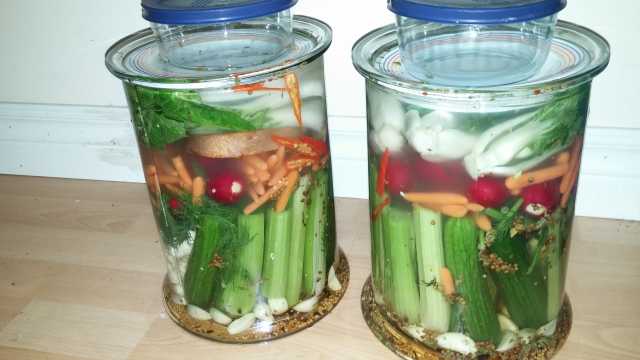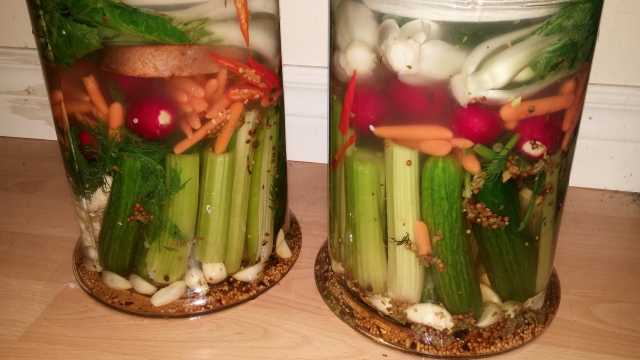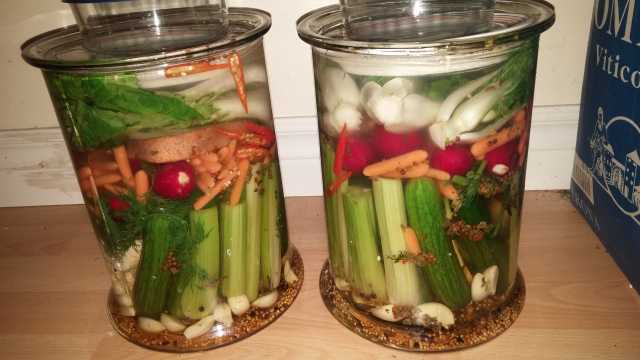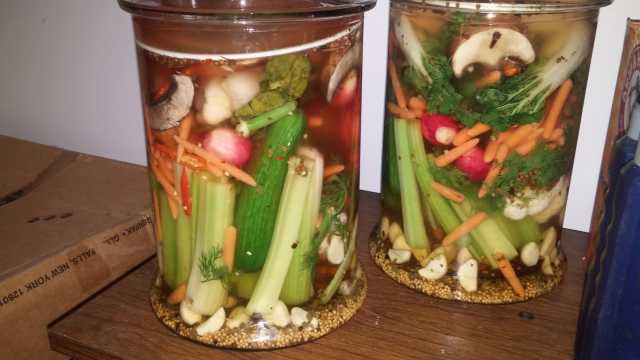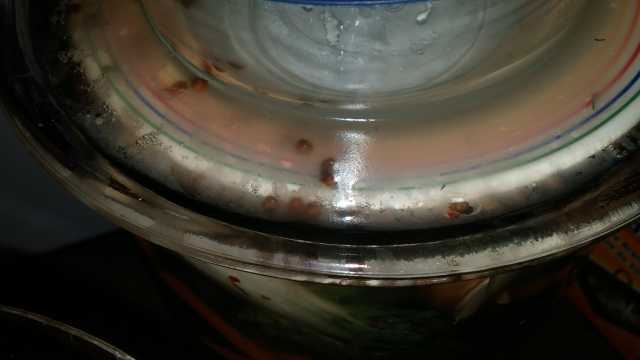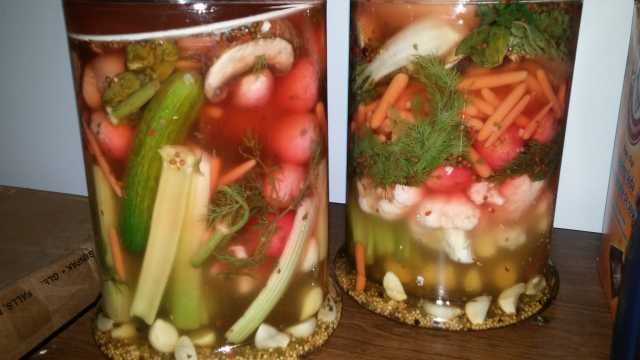Foodies,
Remember those homemade pickles I posted about before? Well I finally got through the entire two large glass crocks and two small jars and went through severe pickle withdrawal symptoms. In desperation, I even bought a standard jar of Strub’s fermented pickles from the supermarket since I figured that winter is probably not the best time to make pickles.
Then two throughts came to mind. First, f**k it. I’ll just do it. Worse comes to worse, I have to send $20 of veggies to the organic recycling. Second, I decided I wanted more than just plain old cucumbers. I wanted a pickle smorgasbord. So off to work I went.
I picked up a slew of vegetables this time to use this time. As you can see by the photos, this time I used fresh mini-cucumbers, celery stalks, cauliflower, a slew of garlic (unlike last time when it was just a few cloves), mini carrots (There is no such thing as a “baby carrot,” they’re actually large carrots shaped and cut by a die cutter. Hence, mini-carrots. Sorry, pet peeve of mine.), radishes, portobello mushroom slices and bok choy. I also thought about adding in kale and whole spring onions or peeled shallots or pearl onions to the mix but there wasn’t enough room in the jars.
Added to the crocks each were an entire bunch of fresh dill which you can’t see because I stuffed them in the middle and the vegetables are surrounding it, though you can see a green stalk sticking out in each one. If you remember from my last photo set, once fermentation sets in the dill will actually separate and flow all over the jar. I also added in 3 TBSP of pickling spices to each crock which you can see at the bottom. Lastly, I split open and added in 3 Thai chili peppers to each glass crock.
For the brine, this time I made a couple of alterations. First, I increased the ratio of salt to water from 1/2 cup of pickling salt to a full cup. I heated the salt in a pot with 4 cups of spring water (two was not enough as the solution will be supersaturated and the salt won’t dissolve) and then added in more water until I had a gallon’s worth of brine. I am hoping this eliminates the need for me to keep adding a tablespoon of salt each day as I had to do for the last batch. I still believe I will have to add more salt for flavor eventually but let’s see how things turn out first.
The second alteration I made was a cheat. Remember that jar of storebought pickles? Well that brine is already loaded with beneficial bacteria and calcium chloride to keep the pickles crisp. Why let it go to waste then? So I added this as well to the brine. The thinking behind it was that it would function like a sourdough starter. Let’s hope that I’m right.
I will keep updating this thread with pics as we follow the development of the pickle smorgasbord. Here’s the first batch:
